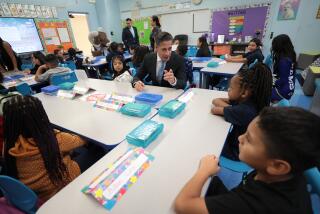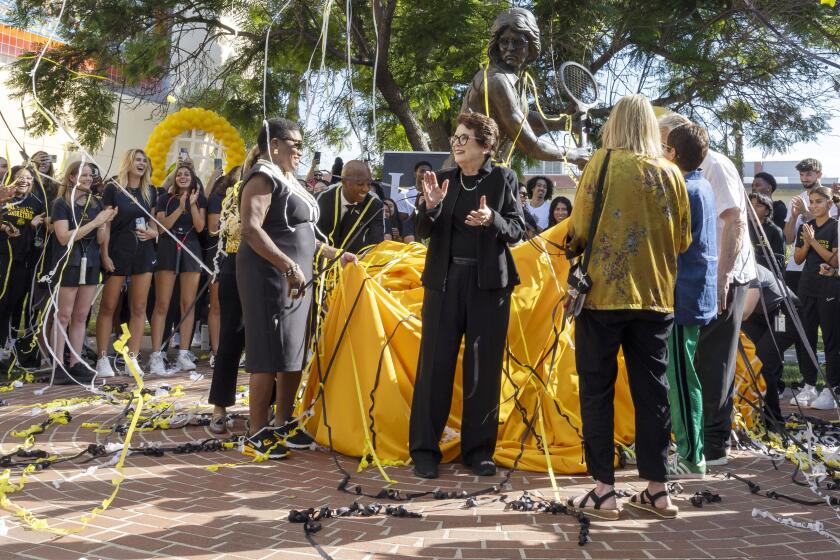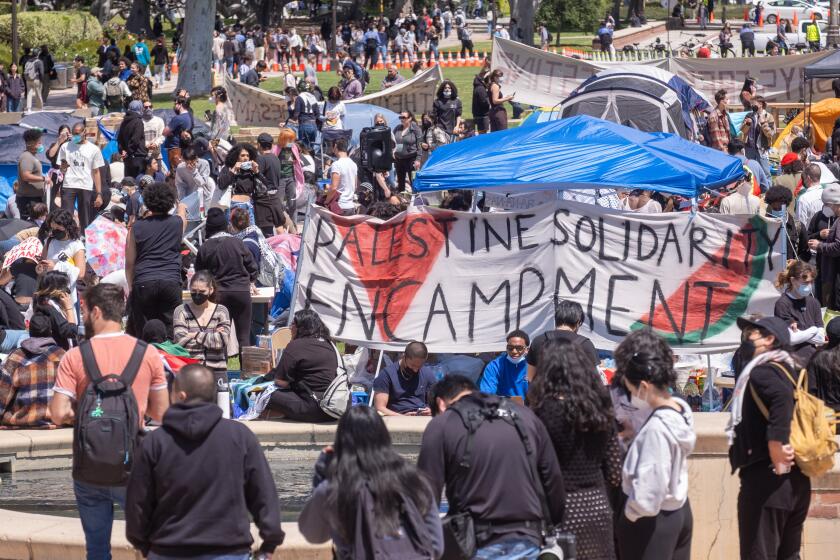
- Share via
- A summer school program for migrant students is threatened by Trump administration budget cuts.
- Amid immigration raid fears, many students took online classes and did not attend L.A. zoo activities.
- Most parents did not attend in-person workshops turning to online seminars instead.
The 8-year-old girl is a migrant student whose family moves frequently in search of seasonal work. But for five weeks this summer, she found stability, fun and academic nurturing in a program for children like her that included visits to the L.A. Zoo twice a week.
But like the axolotl, the salamander she studied, this program is critically endangered. Because migrant students may have family members who are living in the country illegally — or may themselves lack legal status — the Trump administration wants to end federal funding for it, saying the program wastes money and violates his policy directives.
And in a more immediate blow to the program, amid fears over immigration-enforcement raids, fewer children went to the zoo and virtually no parents attended concurrent education workshops on how to support their children’s learning.
Although the federally funded zoo experience is a tiny program within the Los Angeles Unified School District — and a small part of a summer school that reaches tens of thousands of students, it offers a window into how Trump administration policies filter down to the classroom affecting California’s complex education mission and some of the state’s most vulnerable children.
There are 1,700 students defined as migrants in the nation’s second-largest school system, which has about 400,000 students ranging from transitional kindergarten through high school.
Parents of these students typically work in agriculture or the dairy industry and they move with the seasons. The children sometimes move with the parents; sometimes they stay behind with relatives in the Los Angeles area or a different home base. Their parents typically have limited education and often limited English-language skills.
The federal government provides L.A. Unified about $1.4 million for extra help for migrant students throughout the school year, part of some $400 million in federal migrant education grants available nationwide. The annual distribution of this funding was supposed to begin July 1, but the Trump administration held it back, even though it was approved by Congress earlier this year.
Trump is holding back funds to help educate English learners and the children of migrant seasonal workers. The cuts total at least $811 million in California.
Nationwide, this withheld funding for various education programs surpassed an estimated $6 billion, although some was released last week. Last week California joined other states in suing the Trump administration for holding back the money, much of which the administration wants to eliminate entirely in future years, including the migrant education funding.
Those who applaud the federal cutbacks say that state and local governments should pay for these programs if they are valuable. Others believe the federal government retains an important role in helping children with special needs.
Without federal involvement, “some students are going to lose, and historically, it had been students of color, it had been migrant students, it had been low-income students,” said Mayra Lara, director of Southern California partnerships and engagement for the advocacy group EdTrust-West.
A look inside L.A. Unified’s effort
RR — a rising third-grader whom the The Times agreed to identify by her initials to protect her and her family’s privacy — has attended the zoo program for two consecutive years.
“I was kind of excited because I had the same teacher, because I really wanted the same teacher because she was nice and kind,” said RR, who wears glasses and has a dark ponytail.
The number of participants who study at the zoo program is relatively small — because many families leave the area for summer work. In a typical year, 45 students, mostly in elementary school, take part.
This summer, however, the number plummeted to 25, even though L.A. Unified provided buses to take students to the zoo and to Malabar Elementary in Boyle Heights, the home base for classroom work.
What happened is no mystery to Ruth Navarro, the program’s lead teacher for L.A. Unified.
Concerned about immigration raids, four families asked if the district could pick their kids up from home. The district figured out a way to do this, but the families eventually declined to participate regardless, Navarro said.
“Even though we were willing to go to their home to pick them up, they didn’t want to let their child out the door because of fear of what might happen to them,” Navarro said.
Normally, the school system needs three buses to pick up participating students. This year, one of the buses was canceled.

In addition, virtually no parents took advantage of a program for them that coincided with the hours their children were in class, Navarro said. This effort included workshops on such topics as social emotional learning and how to help children improve their reading skills. There also was advice on how to access help with immigration issues, Navarro said.
In response to fears, parents were provided with an online simulcast for the workshops — in which about 15 parents participated, Navarro said. Los Angeles Unified also expanded an online version of the Malabar elementary classes, in which about 40 students participated to varying degrees — far more than usual.
But the online students missed out on the heart of the program — seven trips to the zoo and in-person classroom interaction.

RR took full advantage of summer learning — and became expert on the axolotl.
At first, “I thought it was just like a normal fish, but until I noticed the legs. I was like, ‘Wait, a fish doesn’t have legs,’ ” she recounted.
RR, like other students, created art projects of her animal and also served as a docent for parents and visitors.
“They have gills that help them breathe underwater,” she explained, holding a microphone next to the tank, adding that the axolotl can change colors to hide. “There’s one camouflaging over there,” she said, pointing.
RR thinks it would be fun to be an axolotl and breathe underwater. She’s never been to a pool or an ocean.
California officials must revise state policy in the wake of the Supreme Court’s decision supporting families that wish to opt their children out of LGBTQ+ lessons and themes.
The students are typically extremely shy at the start of the summer, said Coral Barreiro, community programs manager for the L.A. Zoo.
“They learn interpretation skills, which is amazing for building up confidence and public speaking in the future,” Barreiro said. “They meet with the zookeepers, and they basically, at the end, mimic everything that we’ve done and make it their own.”

The big-picture debate
L.A. Unified is continuing its migrant student program for now by using reserves that were designated for other purposes. During the school year, the migrant program pays for services such as tutoring and an extended instructional time after school and on Saturdays.
Some argue that migrant programs — and many other examples of federal education spending — are not the responsibility of the federal government, including Neal P. McCluskey, director of the Center for Educational Freedom at the libertarian-leaning Cato Institute.
“The federal government doesn’t have constitutional authority to fund programs like that, not to mention we have a $37-trillion national debt,” said McCluskey, who was not taking a position on the value of the effort. “If government is going to provide such a program, it should be state or locally funded.”
Trump administration gives California 60 days to remove references to gender identity in federally funded program promoting abstinence and contraception.
The Trump administration, in its budget proposal for next year, echoes this argument, but also classifies the migrant effort as an outright negative.
“This program is extremely expensive” per student, according to budget documents. “This program has not been proven effective and encourages ineligible noncitizens to access taxpayer dollars stripping resources from American students.”
Critics of the administration’s approach say that the federal government has long stepped in to support the students who need it most — when a state is unwilling or unable to do so.
Without federal regulation and funding, state and local governments have not “done right by all students,” said Lara, of EdTrust-West.
The pending cuts and withheld funds, she said, will result in “denying opportunity to students. State and local governments are going to have to make really tough decisions.”
More to Read
Sign up for Essential California
The most important California stories and recommendations in your inbox every morning.
You may occasionally receive promotional content from the Los Angeles Times.


















